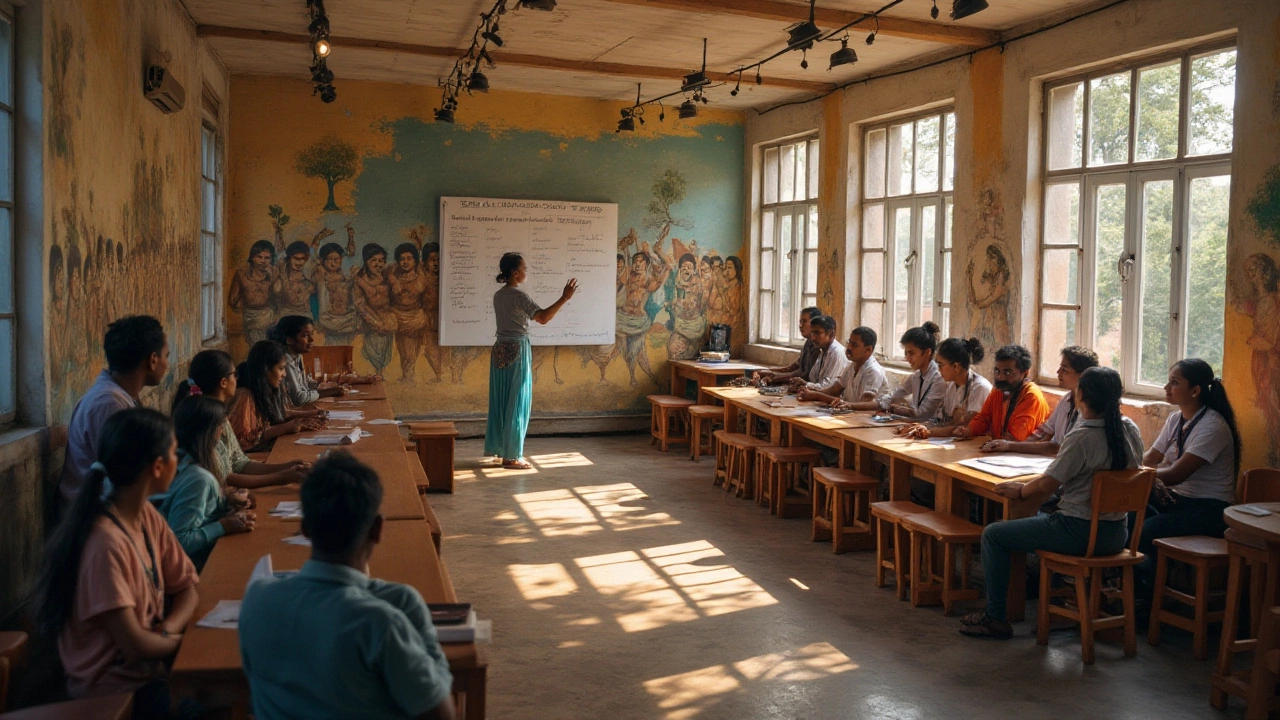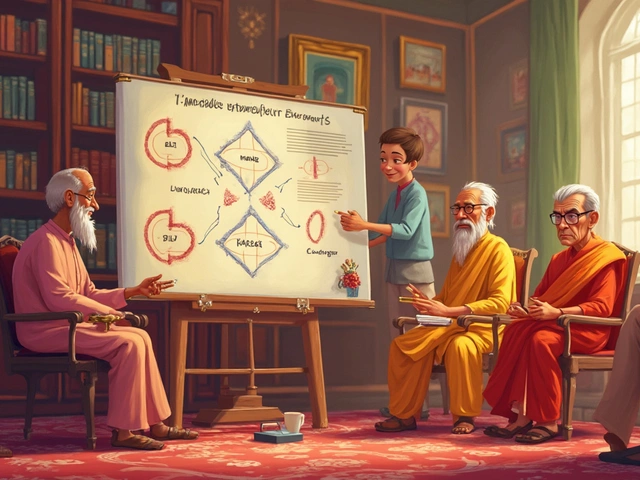In today's interconnected world, community outreach strategies are more essential than ever. They create vital links between organizations and the communities they aim to serve. A well-crafted strategy can transform passive observers into active participants, fostering a sense of belonging and mutual support.
The key to crafting a successful outreach strategy lies in truly understanding the community. It's about knowing who they are, what they value, and how best to communicate with them. In this ever-changing landscape, adaptable strategies that respond to the community's evolving needs can lead to meaningful and lasting engagement.
This article explores the components of an effective community outreach strategy, offering insights into understanding your audience, creating robust plans, building strong partnerships, and evaluating your approaches for continual improvement.
- Understanding Community Needs
- Developing an Outreach Plan
- Building Partnerships and Collaborations
- Evaluating and Adapting Strategies
Understanding Community Needs
Understanding the community needs is the foundational step in building a successful outreach strategy. It requires diving deep into the local fabric to identify what truly matters to the people you aim to engage with. This process is akin to constructing a bridge; without solid support on both sides, it'll simply collapse. To start, immerse yourself in community events and discussions, blending in as a participant rather than an outsider. This allows for genuine insight rather than assumptions. Conversations with residents can reveal unknowns about their aspirations, concerns, and daily challenges. Such dialogues are crucial for capturing the full scope of their needs.
Engaging in community surveys is another powerful tool to gather data directly from the people. According to a study by the National Civic League, surveys that incorporate open-ended questions often yield the richest information. These queries invite individuals to share their experiences and perspectives candidly. However, it's not solely about gathering responses; interpreting them correctly is key. Look for patterns or emerging themes that might not be obvious at first glance. This analysis provides a clearer picture of what improvements or services the community truly desires.
The use of demographic data can also paint a vital backdrop to community needs. Reports from city planning departments or local governments offer an overview of population age, occupation, family structure, and more. Demographic trends can help tailor services or initiatives that align with the current and future needs of community members. For instance, an area with a growing elderly population might prioritize health services or accessible public transport. Conversely, youth-dense areas might benefit from educational programs or recreational facilities.
Engagement through digital channels has become increasingly important, especially in today’s technology-driven era. Social media platforms and online forums are more than just outlets for news and information. They serve as spaces where community members express their thoughts day-to-day. Observing conversations in these spaces can reveal underlying sentiments and trending topics that traditional means may miss. Incorporating this approach not only broadens the scope of understanding but also ensures inclusivity by reaching those who might be unable or unwilling to attend physical meetings or surveys.
Organizing focus groups can provide an interactive dimension to understanding community needs. In these sessions, communities can voice their opinions and provide feedback on proposed ideas. It's an interactive setting that encourages open conversations and real-time feedback. To further aid the planning, consider employing techniques such as participatory mapping or asset-based community development. These approaches empower individuals to identify resources and strengths within their community themselves, often leading to the development of organic, sustainable solutions that resonate deeply.
Acknowledging and honoring diverse cultures and backgrounds within a community ensures that outreach efforts are inclusive and respectful. This can involve working with cultural leaders to better understand traditional practices or attitudes that may influence community needs and priorities. Respecting this diversity can forge stronger, more authentic connections, leading to outreach plans that reflect the unique mosaic of the community.
The culmination of these efforts will result in a comprehensive and nuanced survey of community needs, allowing for strategies that are both effective and empathetic. As Maya Angelou aptly said, “People will forget what you said, people will forget what you did, but people will never forget how you made them feel.” This principle holds true in community outreach; it's about creating positive impacts and meaningful connections that last.

Developing an Outreach Plan
Creating an effective community outreach plan requires a thoughtful approach that takes into account the unique characteristics and needs of the target audience. The first step is to clearly define your goals. What are you hoping to achieve with your outreach efforts? Whether it's increasing awareness of an initiative, fostering community engagement, or soliciting feedback, having a clear objective will guide the rest of your planning process. Goals should be specific, measurable, achievable, relevant, and time-bound—this method is widely known as the SMART criteria.
For a successful outreach strategy, identifying your target audience is crucial. This involves understanding the demographics, interests, and behaviors of those you want to reach. Conducting surveys or community meetings can provide valuable insights into the needs and preferences of community members, allowing you to tailor your approach accordingly. According to a study by the Stanford Social Innovation Review, programs that refine their audience understanding tend to achieve higher levels of engagement and satisfaction.
Next, it's essential to determine the channels that will be most effective for communication. Different groups may prefer different ways of engaging—be it through newsletters, social media platforms, in-person events, or direct mail. Experimenting with a mix of both traditional and digital methods could enhance your reach. For instance, while younger audiences might be more responsive to online interactions, older residents could appreciate print materials or face-to-face meetings.
Resources and budgeting play a critical role in any outreach plan. Assessing what's available in terms of personnel, time, and finances will help you scale your efforts appropriately. Allocating resources effectively ensures that your activities are sustainable over time. Consider reaching out to local businesses or nonprofits for partnerships, as they can offer both financial assistance and credibility to your initiatives. Such collaborations often lead to shared success stories and have proven beneficial in various case studies.
"Successful outreach isn’t just about spreading the message; it’s about listening and responding." - Forbes
Finally, implementing a feedback loop is vital. This enables you to measure the success of your strategies and make necessary adjustments. Gathering input through regular checks like surveys or community forums will help refine your tactics, ensuring they remain relevant and impactful. Reporting progress back to the community helps build trust, showing that you value and act on their input. These iterative improvements can strengthen engagement, leading to more robust relationships and positive outcomes.

Building Partnerships and Collaborations
Creating strong partnerships and meaningful collaborations is a cornerstone of an effective community outreach strategy. At the heart of this effort is the understanding that no single entity can address all community needs alone. Joining forces with other organizations, local businesses, and influential community figures can amplify the impact of outreach initiatives. It provides a collective platform to address complex issues that require resources and expertise beyond any one group's means.
Start by identifying potential partners who share aligned goals or values. This could be other nonprofit organizations, government agencies, schools, healthcare providers, or volunteer groups. Engage in discussions that outline what each party can bring to the table and how collaboration might benefit the community. Open and ongoing communication is critical to ensure that all stakeholders remain committed and focused on the shared objective. One successful example of partnership building was seen in the collaboration between the Boys & Girls Clubs of America and local educational institutions, which resulted in increased resources for youth educational programs.
A structured approach to building partnerships may include formal agreements like Memorandums of Understanding (MOUs), which spell out the roles, responsibilities, and contributions each party commits to. Although formal agreements help in maintaining clarity and accountability, it's often the informal networks and relationships—a coffee meetup here, a shared event there—that truly anchor these collaborations. Such personal connections can foster trust and flexibility, making it easier to navigate challenges as they arise.
"Alone we can do so little; together we can do so much." – Helen Keller.
However, successful collaboration also requires navigating potential pitfalls. Partners may operate on different timelines or have varying priorities and expectations. Openly discussing these differences at the outset can help mitigate future conflicts. Regular meetings and progress updates keep all parties updated and reinforce the collective commitment to the shared goals.
Another practical strategy is to look for synergy in crowd-sourced funding. When multiple organizations align their fundraising efforts, it showcases a united front to potential donors and improves financial gains. Crowdfunding platforms often spotlight these collaborative projects, drawing in wider audiences. Aligning fundraising strategies can optimize resource allocation, further benefiting the community as a whole.
Engagement through social media also plays an instrumental role in partnerships today. Joint social media campaigns or digital events can reach broader audiences, raising awareness and driving participation in your initiatives. Social platforms not only provide a space for regular collaboration updates but also offer a venue for public support and interaction, which can be motivating for all involved parties.

Evaluating and Adapting Strategies
Creating a thriving community outreach initiative requires more than just a stellar plan. Continuous evaluation and adaptation are vital components of any successful outreach strategy. As communities evolve, so too must the efforts to engage with them. This dynamic nature ensures that the outreach remains relevant and impactful. An essential first step in evaluation involves setting clear and measurable objectives right from the outset. These objectives act as a compass, guiding the effectiveness of your efforts and providing benchmarks against which you can measure success.
Gathering feedback is a crucial part of the evaluation process. This involves actively listening to the voices within the community and stakeholders. Surveys, focus groups, and direct interviews can yield invaluable insights into what aspects of your outreach are working and where improvements are needed. Many organizations leverage digital tools to collect this feedback, offering anonymity to respondents, which often results in more candid and useful responses. Moreover, implementing mechanisms for real-time feedback can allow for swift adjustments and prevent issues from festering.
Adapting strategies based on evaluation requires a willingness to embrace change. Community dynamics can shift rapidly, affected by social, economic, or political changes. Flexibility in strategy ensures that engagements remain authentic and impactful. Organizations should view adaptation as a sign of strength rather than a failure of the initial plan. According to the Nonprofit Leadership Center, "Success often lies in the ability to pivot effectively and take the community with you." This means being proactive rather than reactive, preparing alternate plans to address potential shifts in community needs.
Regular strategy assessment should include an analysis of resource allocation. Are the resources being used effectively? Are certain areas overfunded or underfunded in relation to their impact? Using a systematic approach to resource management and aligning them with strategic priorities can enhance outputs significantly. For example, re-allocating funds from less effective programs to bolster successful ones could lead to more substantial community impact. In many cases, utilizing technology can streamline this process, providing detailed analytics that can be used to inform decisions.
To support continuous improvement, having a dedicated team to monitor progress ensures accountability and drives strategic adaptation. The team should be tasked with regularly reviewing objectives, feedback, and community changes, ensuring the strategy remains aligned with its goals. To aid visibility, implementing a simple yet effective reporting structure can help track progress against objectives, identify trends over time, and highlight areas needing attention. This approach allows teams to reflect and strategize on a platform of documented evidence rather than assumptions.
In conclusion, the process of evaluating and adapting community outreach strategies should be an ongoing cycle of reflection and enhancement. This keeps the initiative not only current but also deeply impactful. Implementing regular evaluation cycles alongside clear communication channels fosters an environment where the community feels heard and valued. Such comprehensive evaluation and adaptability will ensure your community outreach initiatives are poised to make a meaningful contribution toward empowering local communities.





